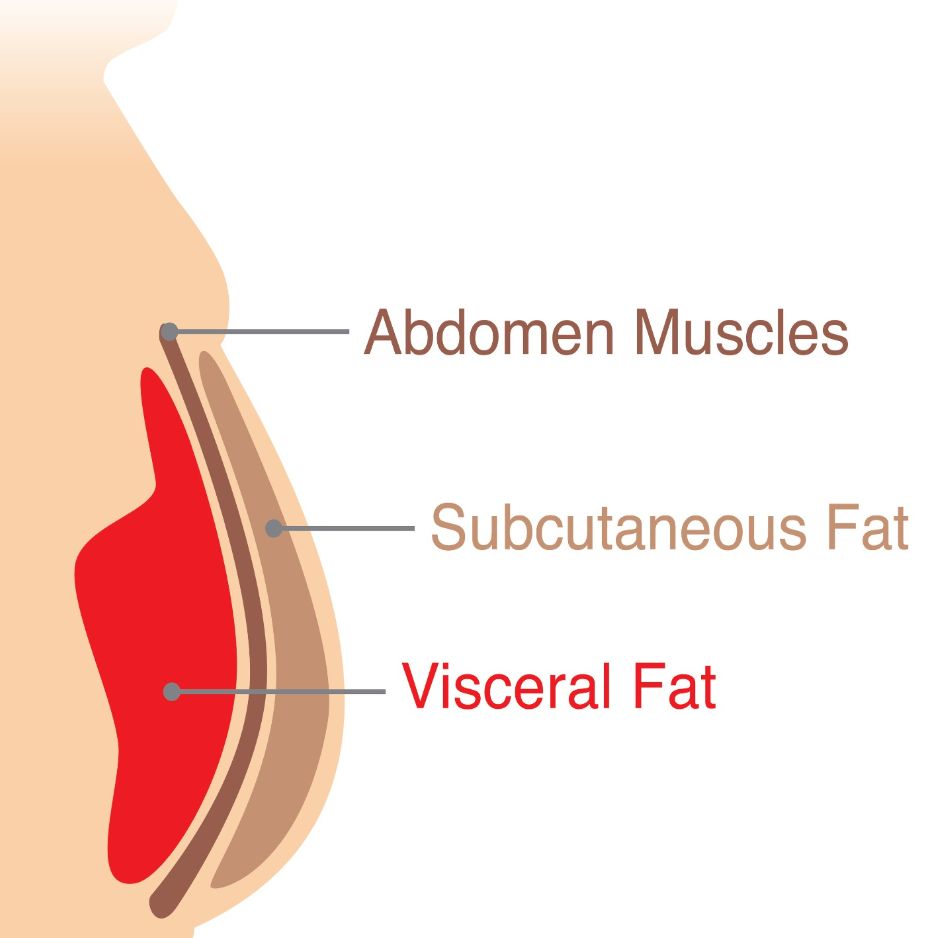Measuring and Reducing Visceral Fat: A Comprehensive Guide from BodySpec

Visceral fat, also known as abdominal fat, is the fat that surrounds your organs in the abdominal cavity. It is different from subcutaneous fat, which is the fat that lies just under the skin. Visceral fat is more dangerous than subcutaneous fat because it is associated with an increased risk of health problems such as heart disease, diabetes, and certain types of cancer.
Here are some ways to measure and reduce visceral fat:
1. Measure your waist circumference
Measuring your waist circumference is a simple way to estimate the amount of visceral fat you have. To measure your waist circumference, wrap a measuring tape around your waist at the level of your belly button. A waist circumference of more than 35 inches for women or 40 inches for men is considered high and is associated with an increased risk of health problems.
2. Get a body composition scan
A body composition scan, such as a DEXA scan, can measure the amount of fat in different areas of your body, including your abdominal cavity. These scans use low-dose X-rays to create detailed images of your bones and soft tissues, allowing your healthcare provider to see exactly how much fat you have and where it is located.
Get weekly updates.
3. Reduce your overall body fat
To reduce your visceral fat, you'll need to reduce your overall body fat. This can be achieved through a combination of diet and exercise. To lose fat, you'll need to create a calorie deficit by burning more calories than you consume. This can be done by increasing your physical activity and making healthier food choices. Some foods that may help reduce visceral fat include avocados, nuts, olive oil, and fatty fish like salmon.
4. Exercise regularly
Exercise can help reduce visceral fat by burning calories and increasing muscle mass. Aim for at least 150 minutes of moderate-intensity aerobic exercise or 75 minutes of vigorous-intensity aerobic exercise per week, as well as two or more days of muscle-strengthening activities. High-intensity interval training (HIIT) has also been shown to be effective at reducing visceral fat.
5. Get enough sleep
Getting enough sleep is important for maintaining a healthy weight and reducing visceral fat. Aim for 7-9 hours of sleep per night to help reduce your risk of weight gain and related health problems.

What’s Next?
Measuring and reducing visceral fat is important for maintaining good health. Waist circumference and body composition scans can help you determine the amount of visceral fat you have, and a combination of diet, exercise, and sleep can help you reduce it.
You can measure your body fat and composition, lean mass gains and losses over time, and bone health by getting regular DEXA scans. DEXA scans can help you pinpoint regional changes in your muscle and fat as you work towards your goals. Your data will accrue and compare side by side in your BodySpec reports, so you can stay on track to being your best self. Find an appointment today!


